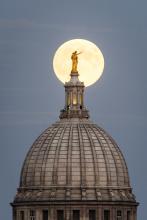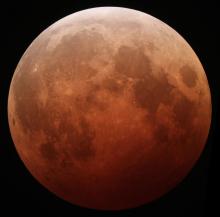Listen to today's episode of StarDate on the web the same day it airs in high-quality streaming audio without any extra ads or announcements. Choose a $8 one-month pass, or listen every day for a year for just $30.
You are here
Crescent Moon
For many people, one of the most common sights in the night sky is also one of the most confusing. It’s the crescent Moon — a phase in which only a small fraction of the hemisphere that faces Earth is illuminated.
Many folks think the dark portion of the Moon is darkened by Earth’s shadow, but it’s not. The only time the Moon passes through the shadow is during an eclipse. And that happens only during full Moon, when the Moon lines up opposite the Sun.
Instead, the cycle of lunar phases is caused by the Moon’s orbital motion. As the Moon orbits Earth, the angle between Earth, Moon, and Sun changes. That means that sunlight illuminates different fractions of the hemisphere that faces Earth.
The Moon was new on Tuesday, as it passed between Earth and the Sun. The far side of the Moon was facing the Sun then, so the hemisphere that faces Earth was dark.
Today, the Moon has moved away from the Sun, but it still lines up in the Sun’s general direction. At that angle, sunlight illuminates only a few percent of the part of the Moon that faces our way. The rest of the disk is in its own shadow, so it’s nighttime.
If you could stand on the Moon and look toward Earth right now, our planet would be almost full. It’s dozens of times brighter than a full Moon, so it lights up the lunar night. We see that effect as earthshine — a subtle glow across the dark part of the crescent Moon, which is low in the southwest at sunset tonight.
Script by Damond Benningfield





